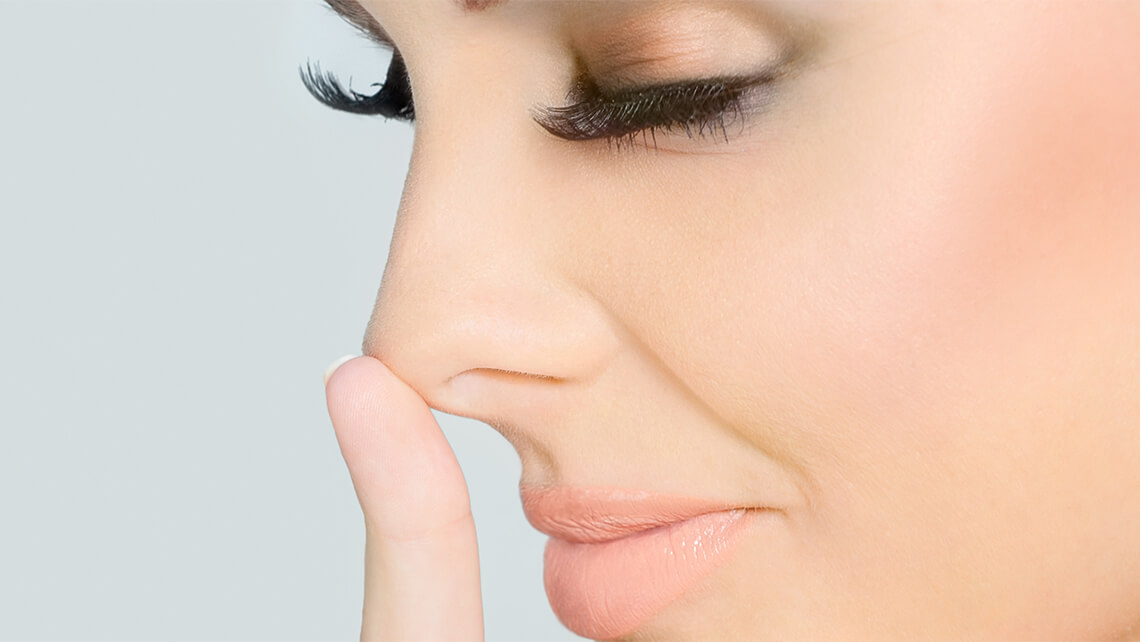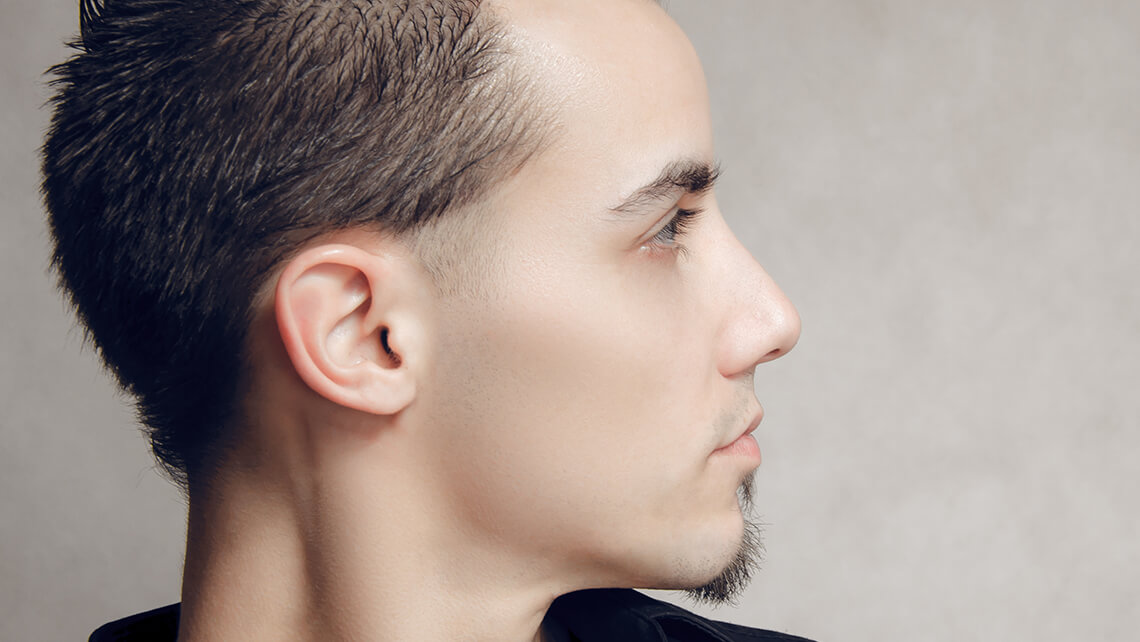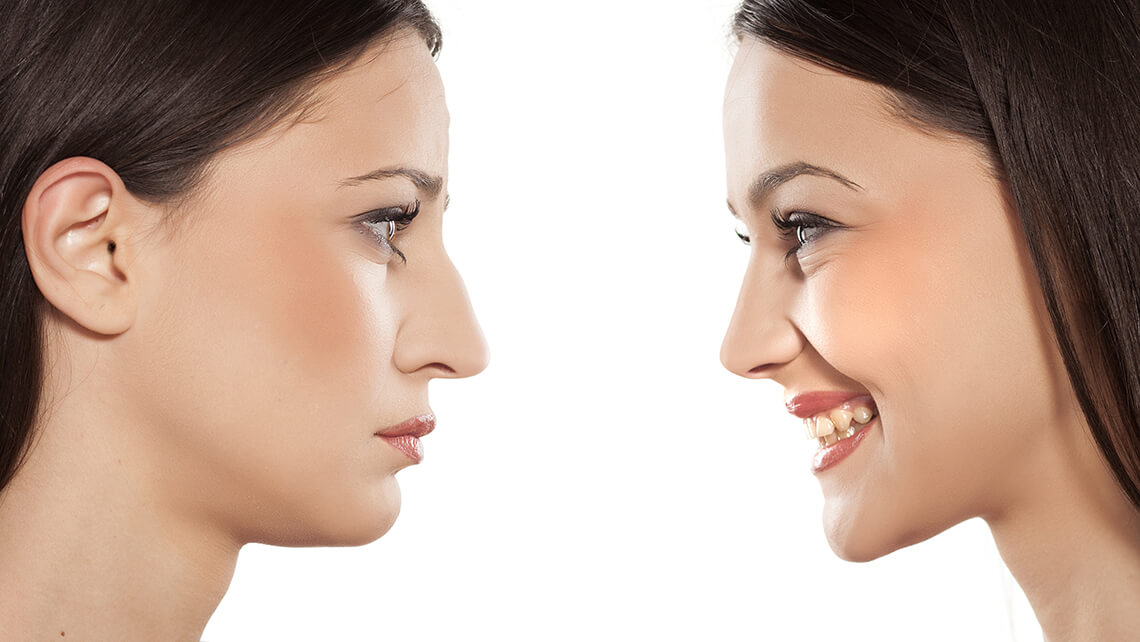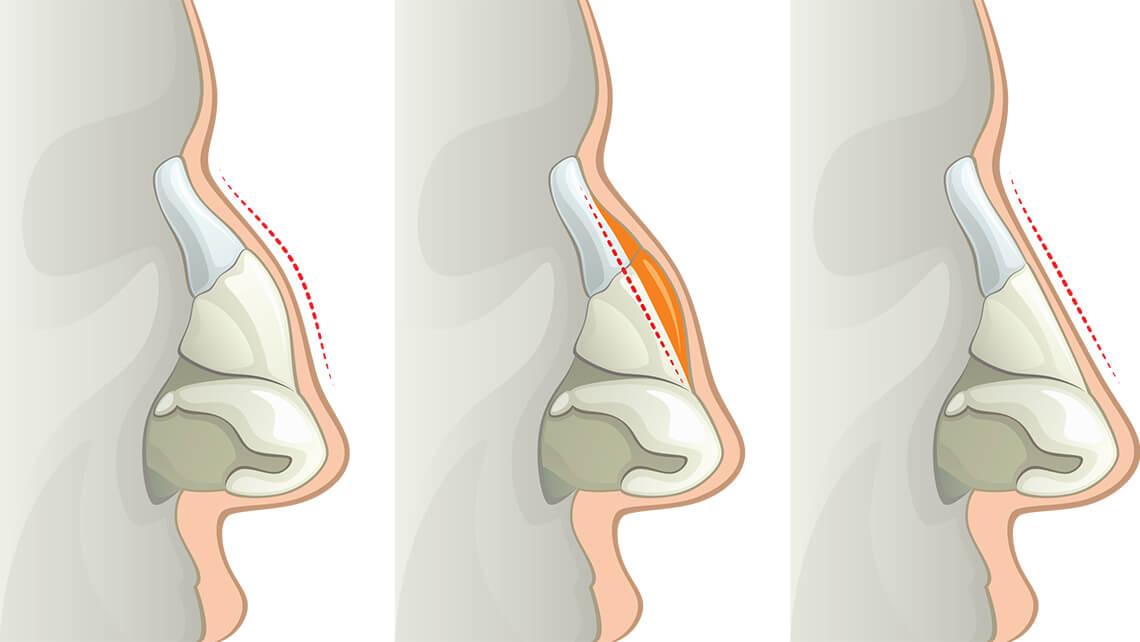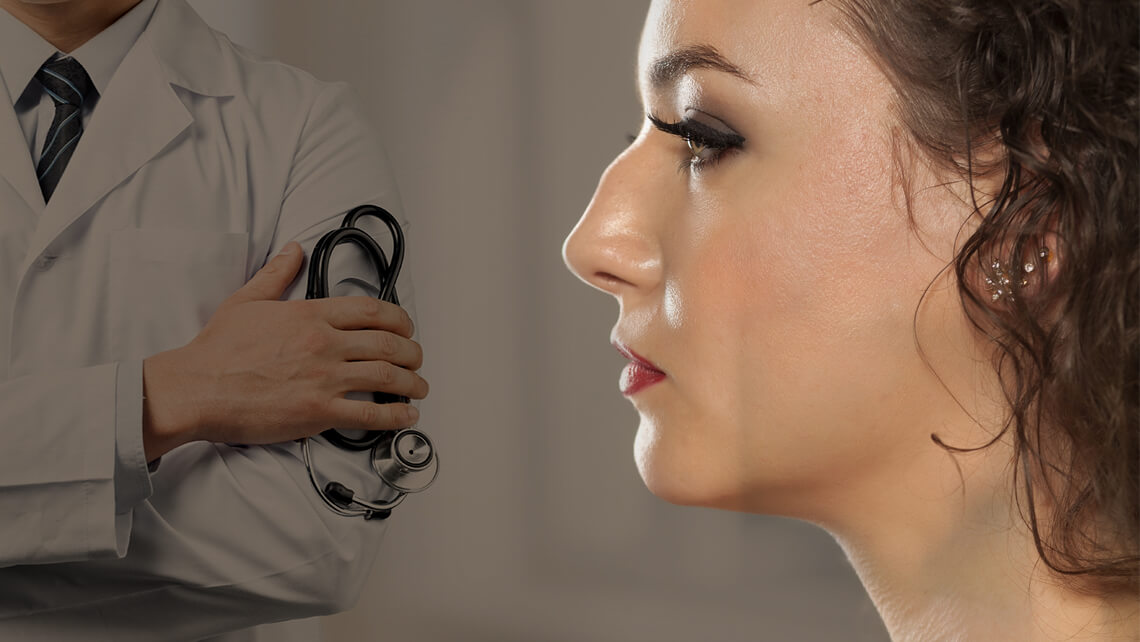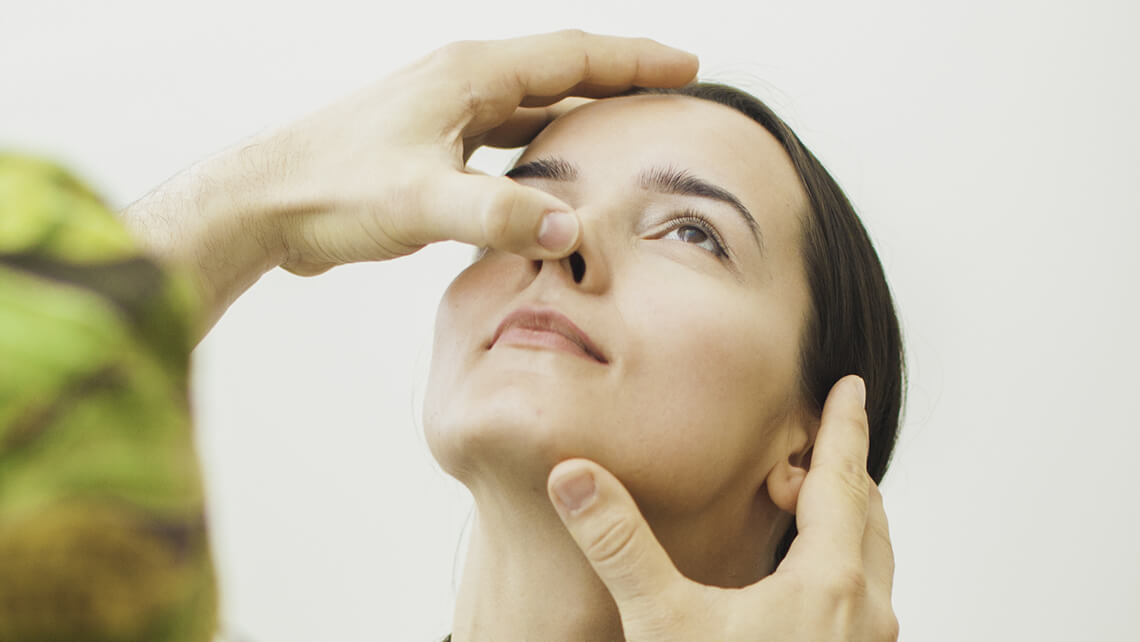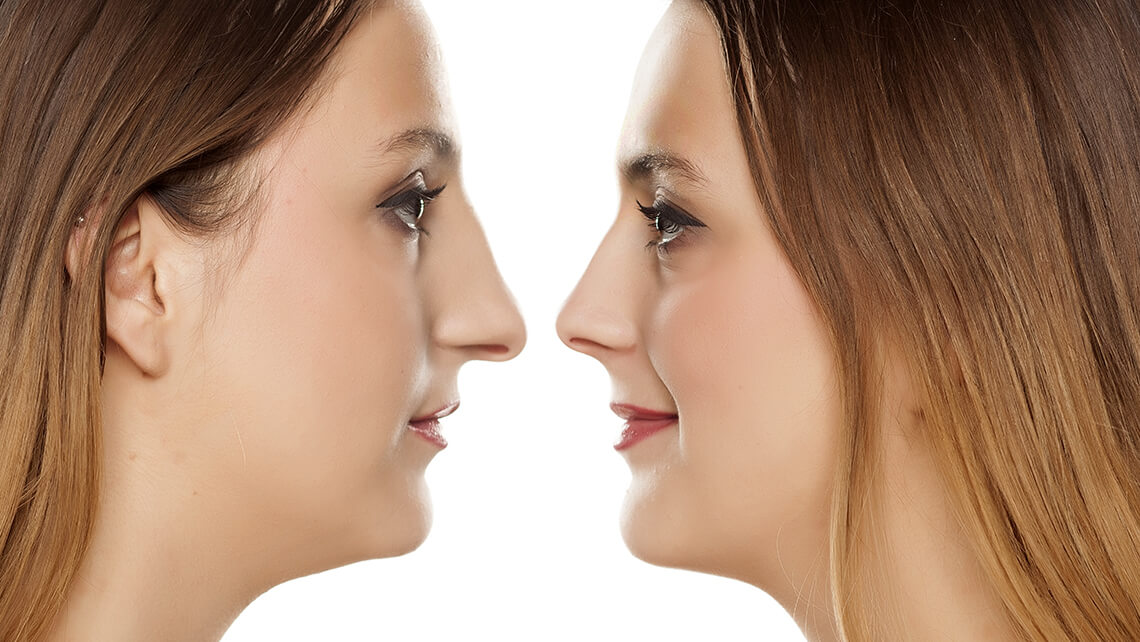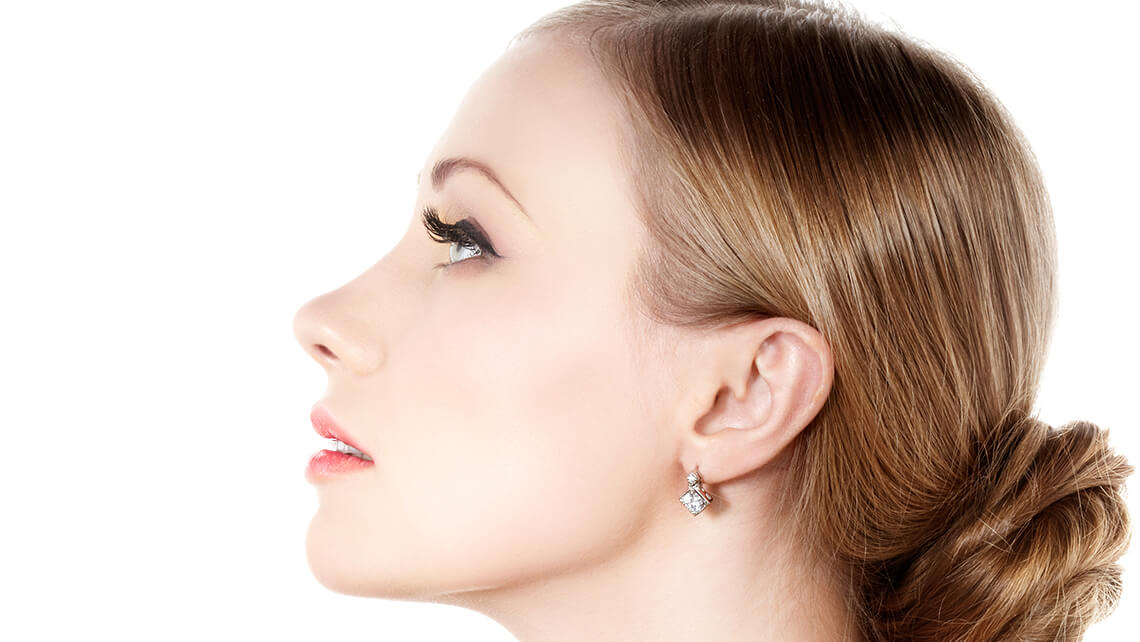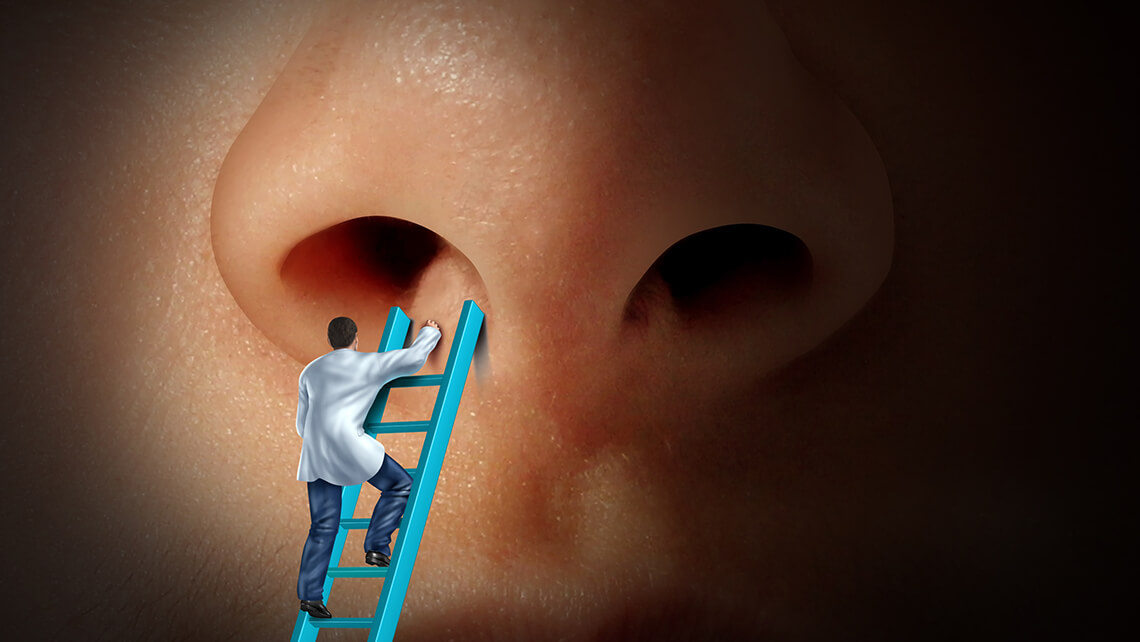Natural rhinoplasty performed by preserving the unique characteristics of the nose, is more preferred today because it enables the nose to look naturally flawless. The most important cause of this is the need for looking natural and the fact that people are becoming more and more alike. To achieve this, the artistic proportions of the nose as well as the proportions between the nose and the face should be taken into consideration.
Even ensuring is a certain ratio between the nose and the ear makes the facial profile look better and more balanced. The ear and nose, which should have lengths close to each other, should be positioned on the same parallel axis.
The nostrils are one of the places which have many artistic proportions. The nostrils may disclose that the nose has undergone surgical intervention. The nostrils, which should look like symmetrical and like equal ellipses when viewed from the side, should also have the appearance of a seagull spreading its wings, when viewed from the front. The nostrils should maintain their oval shape after surgery. Round nostrils, on the other hand, are not desired because it is a geometrical form specific to black people and children. The artistic ellipse is of great functional importance. If a weakened nostril in a form other than these cannot withstand the negative pressure that the nasal air intake creates, the amount of air intake decreases. Therefore, it is necessary to preserve the cartilage support of the nasal wings during plastic surgeries. In fact, the nostril and the structures surrounding it constitute a quite complex unit. It is necessary to carefully approach the nasal wings that consist of seven parts. Nostril aesthetics can be done alone or as a part of a full rhinoplasty. The position and form of the nasal wings surrounding the nostrils causes the nose to look long or short. Therefore, even nostril aesthetics alone can improve the appearance of the nose.

It is possible to decrease or increase the size of the nostrils. It is also possible to narrow and reshape the nasal wings. Plump nasal wings can be thinned. Mathematical formulas and artistic proportions are of great importance in nostril aesthetics. Nostril ratios affect neighboring structures, as well. For example, the distance between the inner corners of the eyes is taken as a basis for the distance between the two nostrils. If the distance between the corners of the mouth is 1.6 times the distance between the nostrils, these two adjacent structures look more harmonious with each other. The width of the nose should never exceed the distance between the two nasal wings. The nasal ridge should be in harmony with the brow curve, and should form a line that has a parallel and symmetrical reflection. The nasal ridge is also very effective in reshaping the nose in accordance with the gender. The closer the line passing from the nasal ridge to the nasal tip, the more masculine lines the nose has. The nasal tip should give an equilateral triangle reflection when viewed from the front. The length of the nose should be approximately 1.6 times the projection. Although the nasal tip generally thought to have a single angle, it has actually two angles. A single angle causes the nose to look artificial, while a dual angle creates a natural-looking nose. As the nasal root angle gets deeper, the nose becomes more prominent; and as the nasal root angle becomes superficial, it remains in the background more.
Simple touches in rhinoplasty include procedures intended to change and improve the parts, which make the nose look bad or disrupt its harmony with face. Simple touches can sometimes be in the form of a surgical operation and sometimes in the form of a non-surgical intervention. In the logic of such operations, analyzing the problem in the best possible way is at the forefront.
In the analysis, computer aided geometry studies on the nose and face as well as sculpture studies made with nose-face molds provide important advantages. During the analyzes the wrong perceptions and judgments of patients should also be revealed and the patients should be trained to enable them to evaluate their nose and face more realistically and accurately. After the analysis of the people who come with complaints about aesthetic problems related to their nose, we often witness that the problems are actually in the surrounding structures, especially in the face, eyebrows, lips, chin and forehead, but the person does not notice them and blames the nose for all the aesthetic problems. In modern plastic surgery, the most important goal of rhinoplasty is to conceal that the nose has been surgically corrected. This goal is closely related to artistic proportions.

